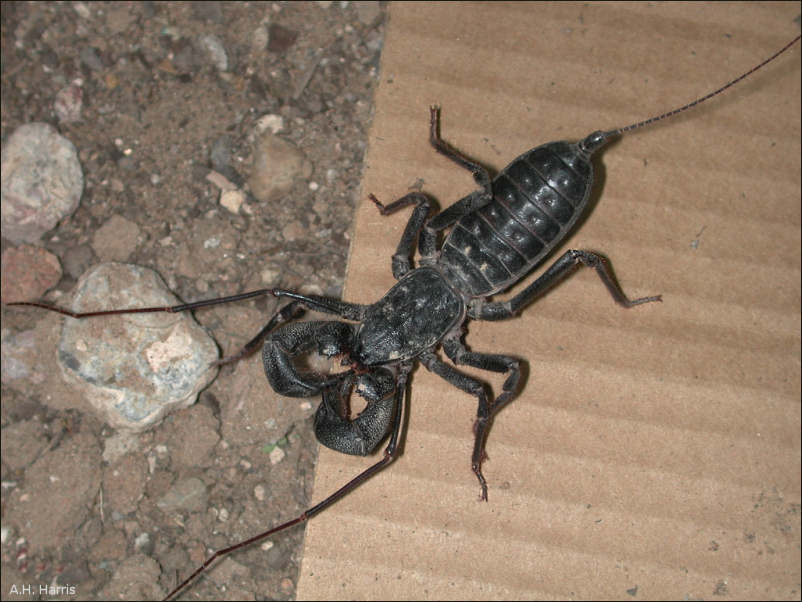



Giant Whip Scorpion (Mastigoproctus giganteus). Photograph by A.H. Harris.
As with other members of the class, the whip scorpions have eight legs. The first pair is elongated and used as sensory structures. A long, thin extension from the rear of the body (the "whip") also is sensory. There are two dorsal eyes and two groups of three each on each side of the anterior end. The pedipalps, anterior to the first pair of legs, are massive and bear pinchers. Glands at the rear of the abdomen secrete a liquid that is about 85% acetic acid and acts as a deterent to potential predators. The Giant Whip Scorpion is the largest of the group and is dark brown in color.
Although often thought to be venomous, they possess no venom. Defense is by ejecting a mist of the acetic-acid bearing liquid and by use of the pedipalps. The latter have the potential of giving a powerful pinch, but are not considered dangerous.
Mastigoproctus giganteus secretes itself during the day under rocks or various types of debris, emerging to hunt after dark.
The diet consists mostly of other invertebrates, but small vertebrates have fallen prey to it on occasion.
This species occurs in the southern and southwestern portions of the U.S. and south into Mexico.
Jackman, J. A. 1997. A field guide to spiders & scorpions of Texas. Gulf Publishing Co., Houston, 201 pp.
Last Update: A.H. Harris, 7 Jul 2006.